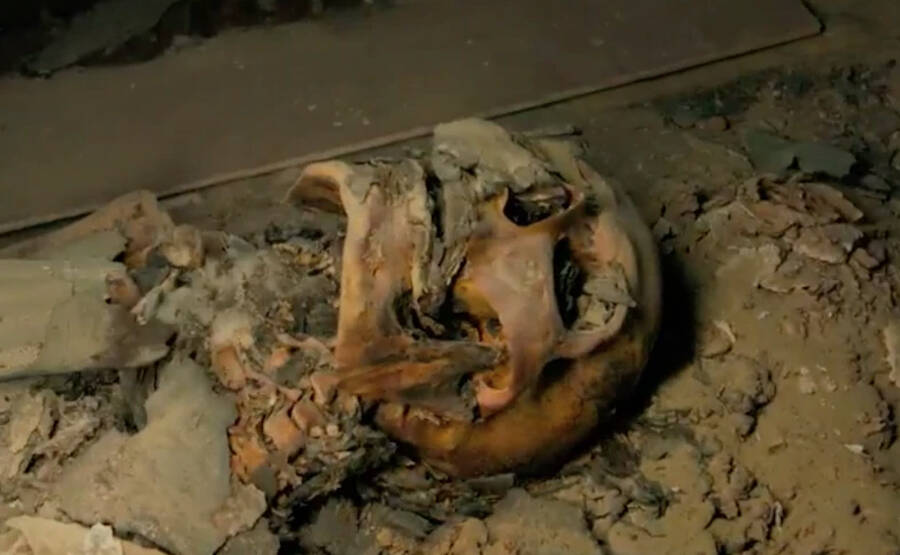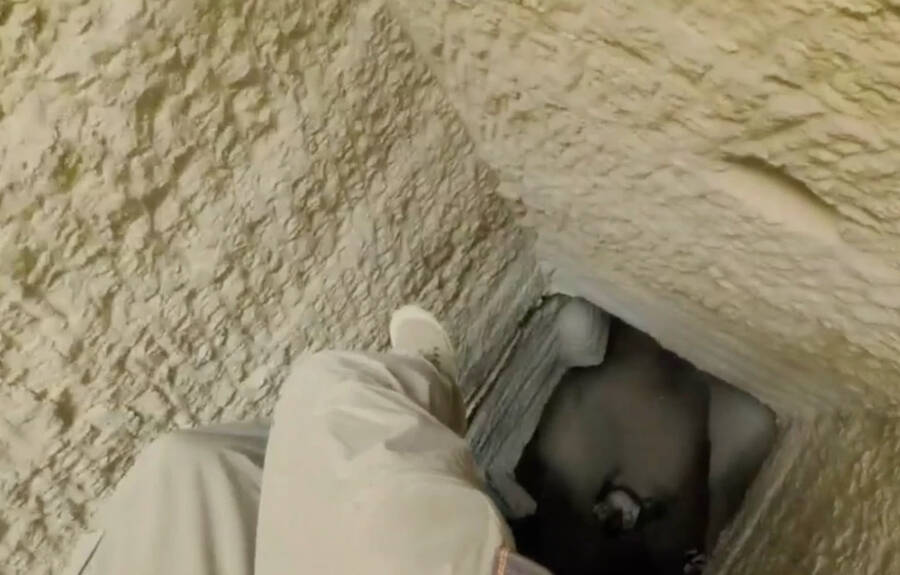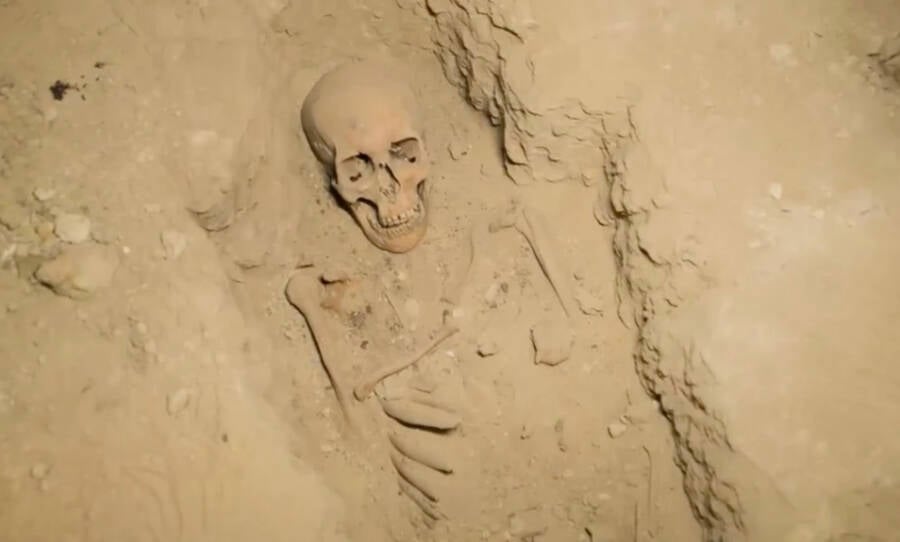Egypt’s First Fully Preserved Funeral Home Has Been Discovered In The City Of The Dead

The funeral complex was found at the bottom of a 40-foot shaft, from which archaeologists had to remove 42 tons of fill before entering.
In July 2018, archaeologists unearthed a sprawling, ancient Egyptian “funeral home” beneath Saqqara. The trove of discoveries pointed toward a substantial funeral industry in ancient Egypt and has since allowed researchers to document evidence of this business for the first time.
According to National Geographic, the discovery of this necropolis sent shockwaves through the archaeological community — and shifted the focus from royal, pharaoh-centric tomb research to the more plebeian, yielding new information about the day-to-day business of death.
The artifacts revealed a whole roster of options for those anticipating their journey into the afterlife. From gold foil and white plaster burial masks to the costly gold and silver ones, or affordable painted clay jars to store one’s innards to expensive Egyptian alabaster — the customer was always right.
“The evidence we uncovered shows the embalmers had very good business sense,” said Ramadan Hussein, an Egyptologist at the University of Tübingen in Germany. “They were very smart about providing alternatives.”
Saqqara sits on the banks of the Nile, around 20 miles south of Cairo. It’s believed mummification workshops like the one found under its sands have likely been overlooked for generations, in favor of the royal tombs waiting to be dug up below.
For Hussein, who started his work at Saqqara in 2016, the results of this years-long effort have been nothing short of remarkable. His focus was on tombs dating to 600 B.C. that were largely ignored by his peers and hidden deep underground.
It was while examining an area last probed in the 1800s that Hussein and his team found a shaft that was carved into the bedrock. Filled with debris and sand, the resourceful Egyptologist had an inkling something was waiting below. Little did he know he’d found a mummification workshop for the working man.
“We’ve been reading about this in the [ancient] texts,” he said, “but now we can really contextualize the business of death.”

This is just one of the dozens of mummies discovered in the ancient funeral complex, where over 50 in all sorts of conditions were found buried.
The excavation took months and the removal of 42 tons of fill but ended in the discovery of a 40-foot shaft and large chamber with high ceilings. Thousands of pottery fragments, shallow channels cut into the bedrock, and a table-like area were found. The network of passages provided a cool breeze.
Hussein quickly found this wasn’t a typical tomb, but a workshop to mummify people, designed with drainage channels, natural ventilation, and an industrial-strength incense burner to ward off the animals.
“If you’re doing evisceration down there, you need air moving in to get rid of insects,” said Hussein. “You want constant movement of air when you’re dealing with cadavers.”
The pottery fragments, which were carefully documented and conserved, only further clarified the purpose of this place.
“Every single cup or bowl has the name of the substance it held, and the days of the embalming procedure it was used,” said Hussein. “Instructions are written directly on the objects.”

The resourceful archaeologists used winches to descend into the ancient funeral home, which was part of an underground complex and designed to provide natural ventilation.
Hussein says that “we can talk about the archaeology of embalming” purportedly “for the first time.” There’s no shortage of ancient texts or artistic depictions of embalming — but archaeological evidence has been rather rare.
“Very few workshops devoted to the process have been properly excavated,” explained Dietrich Raue, curator of the University of Leipzig’s Egyptian Museum. “That leads to a big gap in our knowledge.”
It’s common knowledge the ancient Egyptians believed the body had to remain intact so the soul could venture properly into the afterlife. However, this highly organized ritual took a shocking 70 days replete with rites and prayers on each of them.
After the internal organs were removed and placed into canopic jars, the corpse was dried with salts such as natron. The dead were then covered in fragrant oils and wrapped in linen before amulets and spells were tucked between the folds. Lastly, any cherished personal items furnished the tomb.

The range of burials spanned from the more wealthy, who were adorned with gold and silver burial masks, to those buried in wooden coffins with nary a personal item by their side.
“It was a huge industry,” said Hussein, with discount packages available to suit every budget.
From evisceration of the bodies to burials and maintenance of the deceased’s souls, this ancient undertaker business was vertically integrated and offered customers the whole experience. Hussein and his team discovered a second shaft leading to another room housing six tombs and 50 mummies.
One held a woman in a limestone sarcophagus weighing over seven tons. Another held a woman whose face was covered with a gold and silver burial mask — the first one found in Egypt in over 100 years. The complex of tombs also held more humble, working-class individuals in wooden coffins.
Hussein posits the embalmers accepted either money or parcels of land for their work. They would first pack the bodies in the burial shaft, then collect their fee, and continue their agreed-upon services.
Ultimately, this is the first time that archaeological evidence definitively confirms what has only been theory based on inscriptions and ancient legal documents. On top of that, it’s a welcome pivot from focusing only on the fanciest, most royal tombs, to how the ancient Egyptian masses interacted with death.
“Ramadan is getting a lot of information that was simply lost in the past,” said Raue. “There was a whole infrastructure above ground that was simply removed without documentation.
No comments: